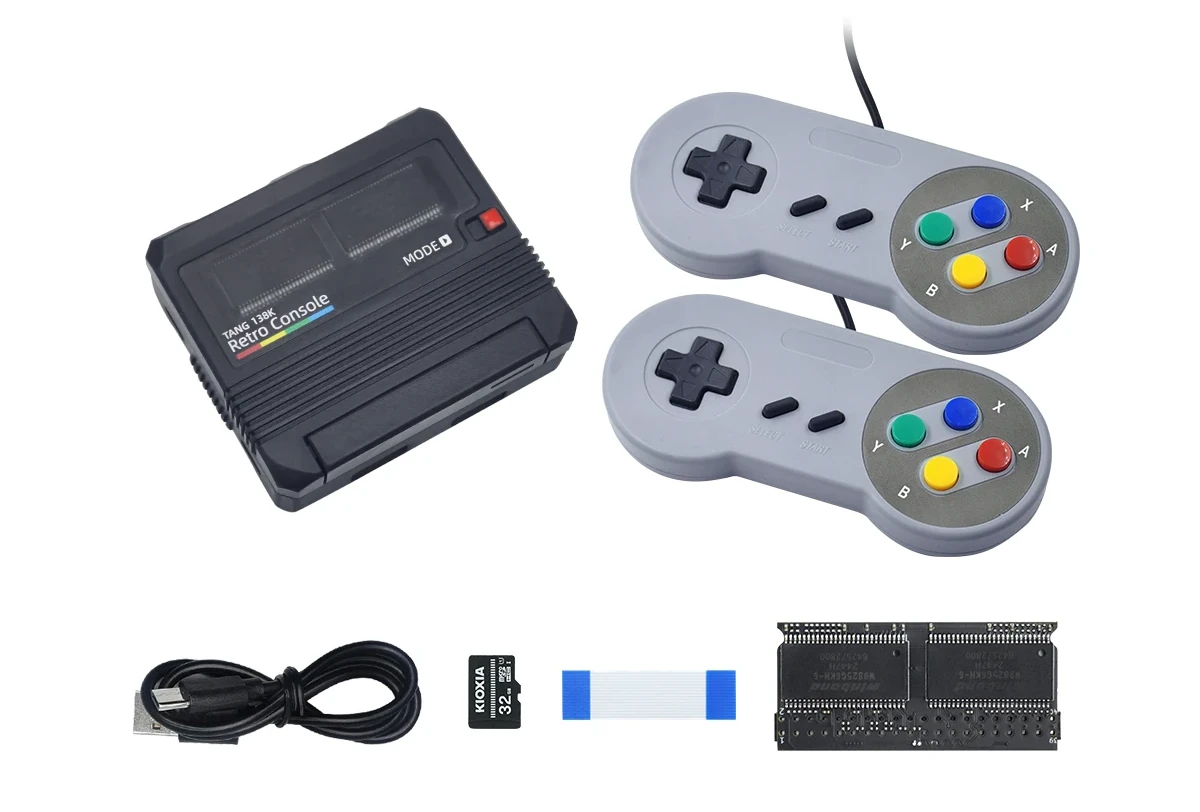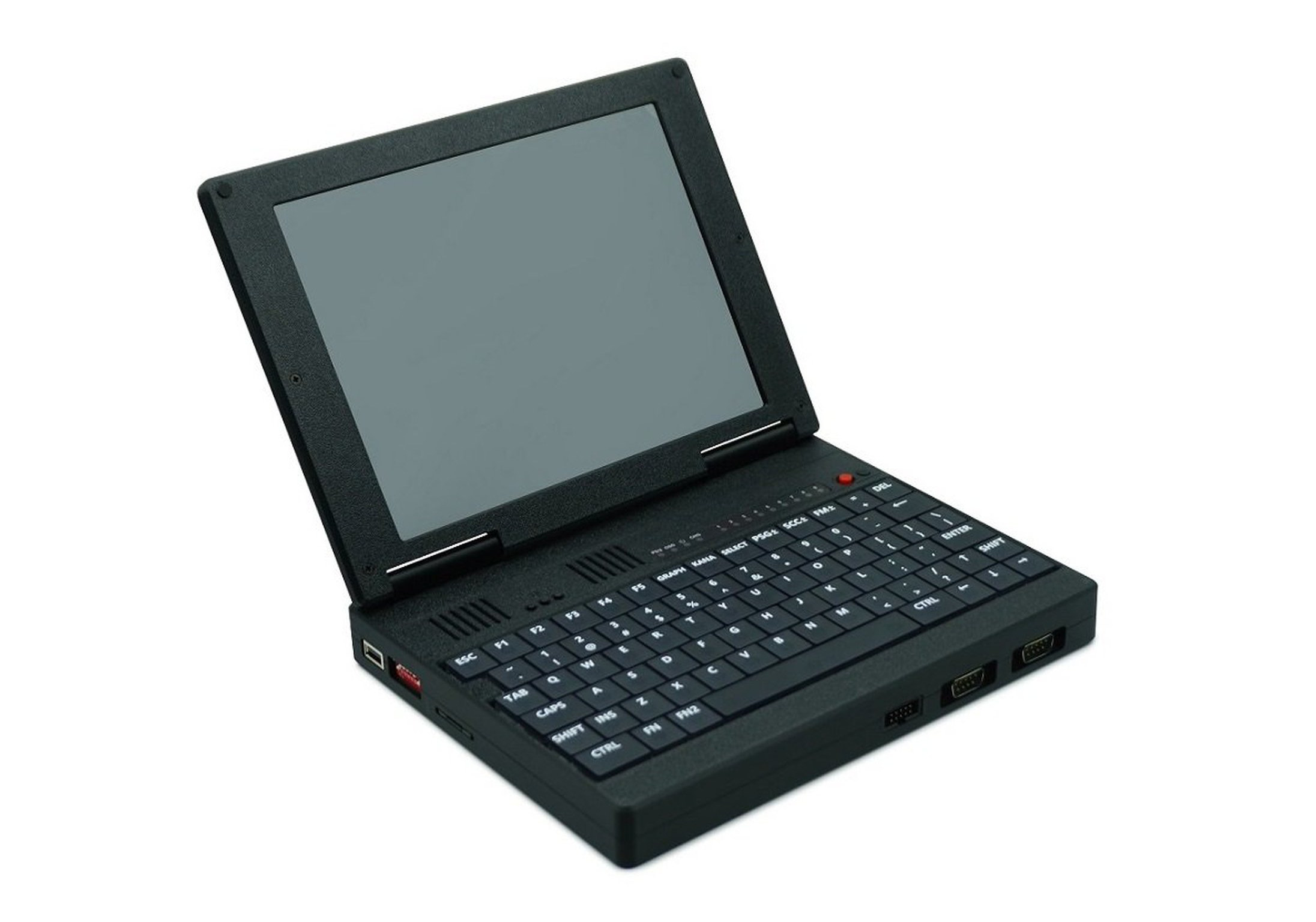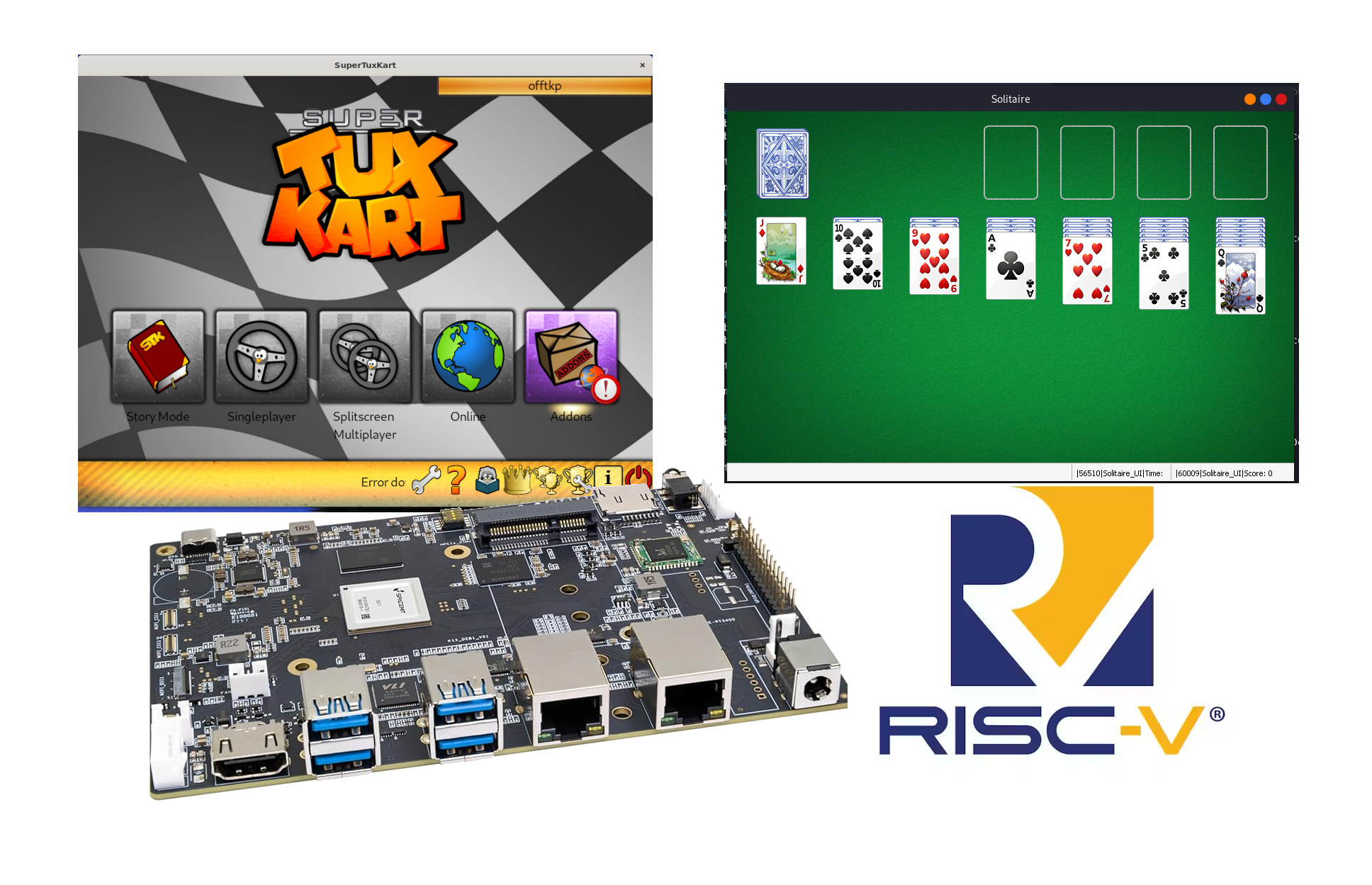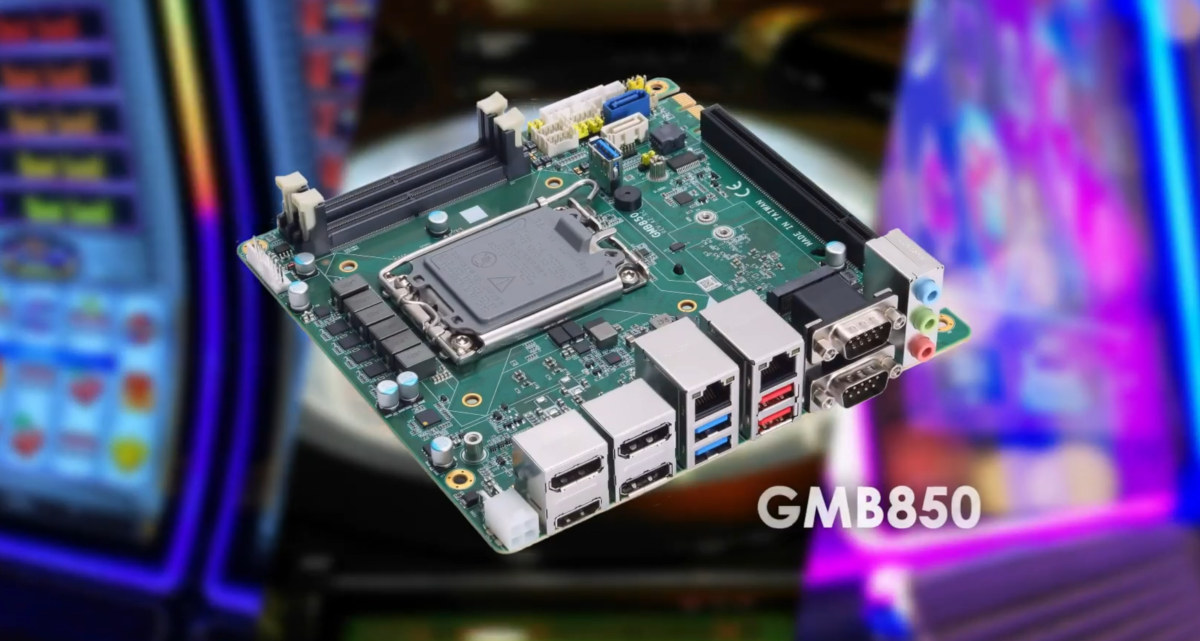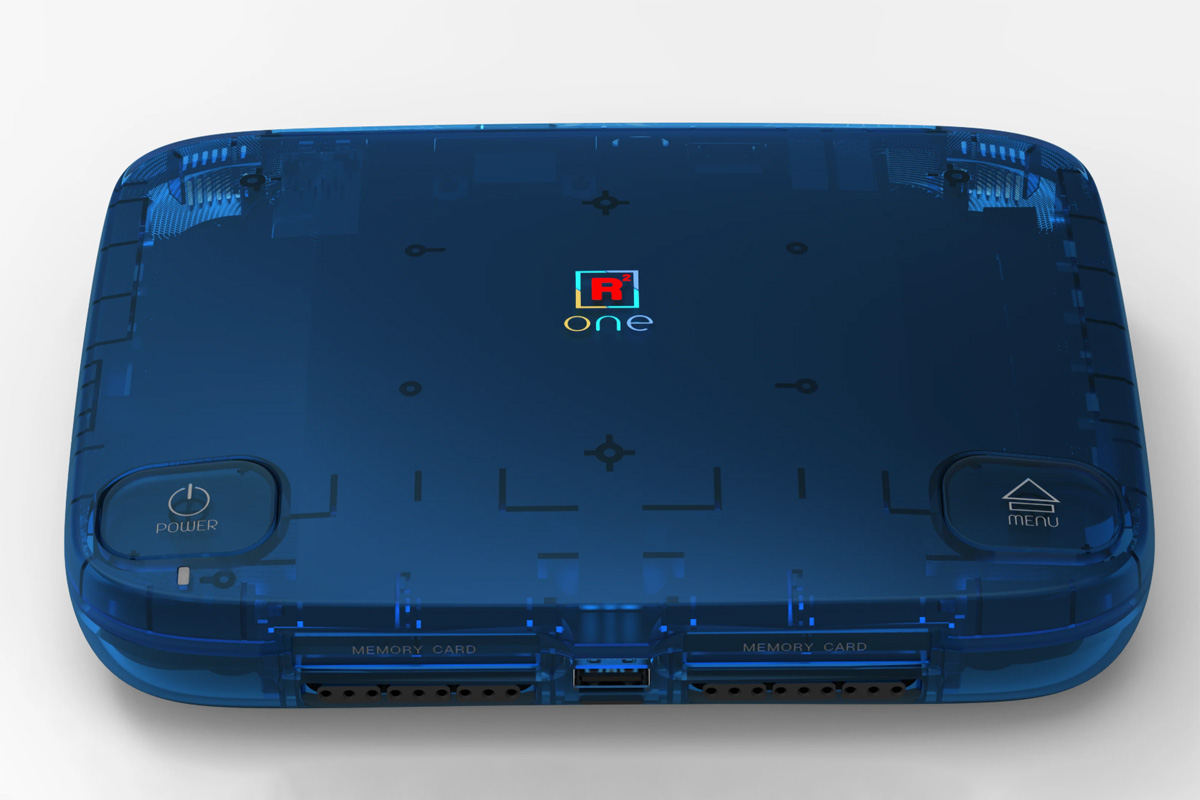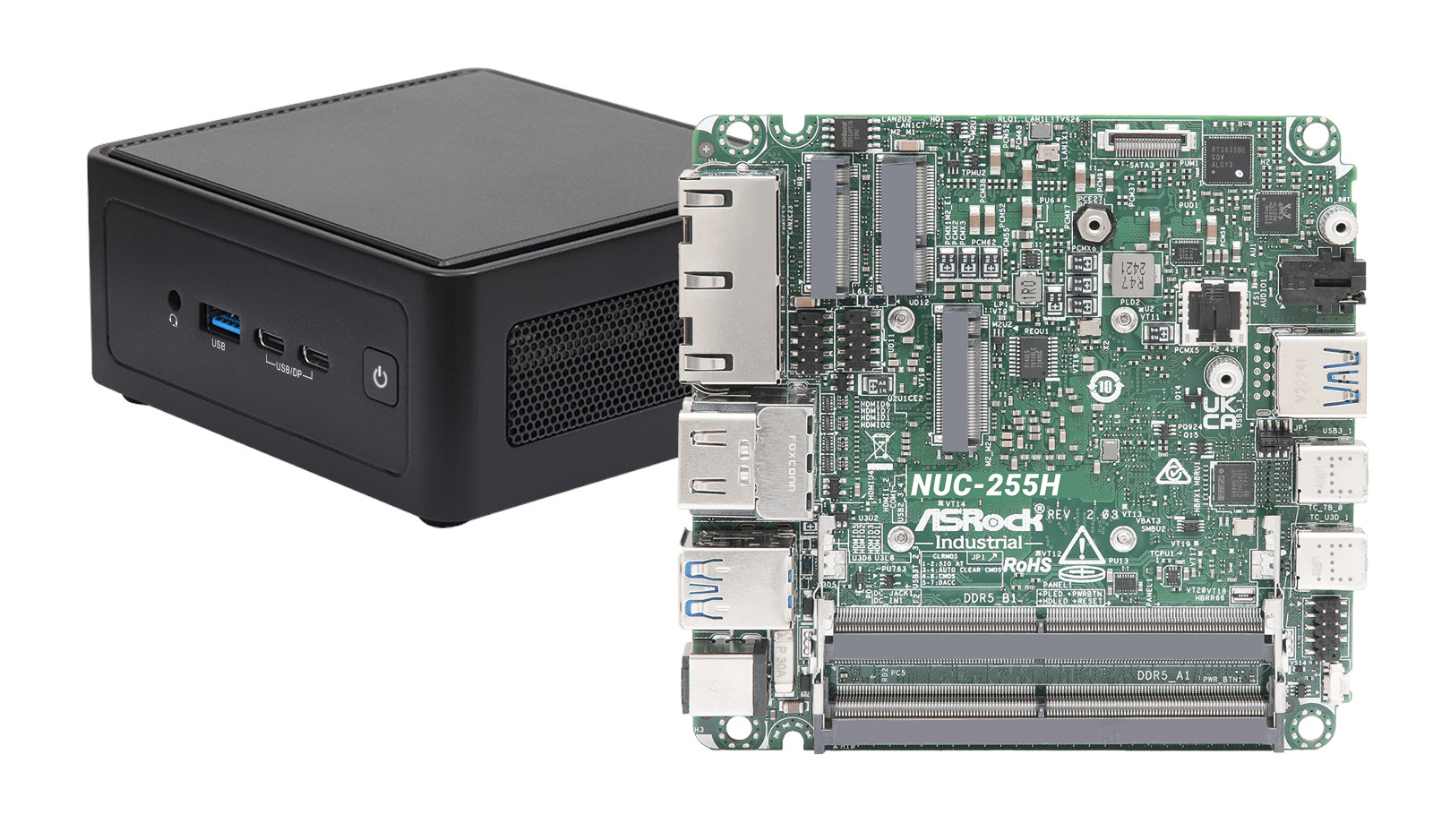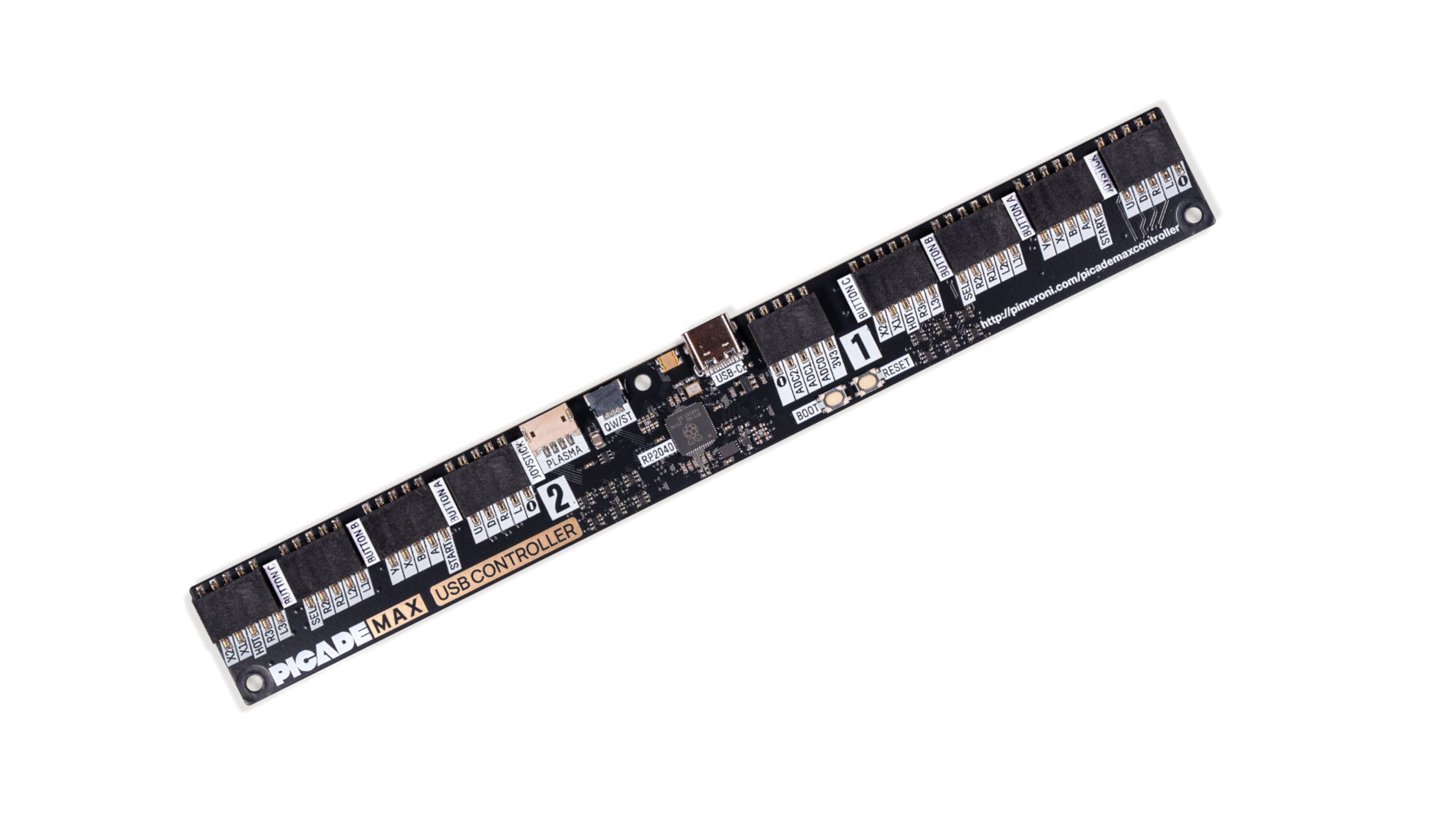Sipeed Tang Console is an FPGA development based on GOWIN GW5AST SoC FPGA with 138K LUTs and a hard RISC-V core or GW5AT FPGA with 60K LUTs, designed as a generic FPGA development and retro gaming platform. The Tange Console offers HDMI and RGB LCD display connectors, two USB ports for joystick or other peripherals, and plenty of expansion options with two 40-pin headers for SDRAM, GBA, and custom expansion, two PMOD connectors for joysticks or custom modules, and a 16-pin Raspberry Pi PCIe FFC connector. The “Tang Console” is also integrated into the “Tang Retro Console” as a complete gaming console kit with enclosure, joysticks, and accessories. Sipeed Tang Console specifications: SoM(one or the other) Sipeed Tang Mega 138K SoC FPGA – GOWIN GW5AST-LV138FPG484A with 138,240 LUT4 1,080 Kb Shadow SRAM (SSRAM) 6,120 Kb Block SRAM (BSRAM) Number of BSRAM – 340 298x DSP slices 12x PLLs 16x global […]
OneChipBook-12 is a Cyclone EP1C12Q FPGA development platform with a built-in display and mechanical keyboard
It may look like a netbook from 10 years ago, but the OneChipBook-12 from “8086YES!” is instead an Altera Cyclone EP1C12Q FPGA development platform with a VGA display (LCD form iPad 2), a PS/2 QWERTY mechanical keyboard, a battery, and a few ports. While the OneChipBook-12 is sold as a blank FPGA development platform “with no predefined functionalities”, the hardware is similar to One Chip MSX (1chipMSX), Zemmix Neo, and uMSX systems, which are modern MSX2+ clones, and that’s the main reason people are purchasing the device. OneChipBook-12 specifications: FPGA Altera Cyclone EP1C12Q240 (from the obsolete Cyclone I family) 12,060 LEs 239,616 bits RAM System Memory – 32MB SDRAM Storage – SD card slot (FAT16 file system supported) Display – 1024×768 VGA display Video Output – VGA, S-Video, and CVBS Output interface Audio – Stereo speakers, audio output jack (8), volume control knob (9) USB – USB Type-A port […]
Felix86 is an x86-64 emulator for RISC-V hardware
Some programs and most games are designed for x86 hardware, and we’ve already seen projects like box86 x86 emulator for 32-bit Arm targets and Box64 x86-64 emulator for 64-bit Arm hardware to run games on Arm hardware. The Felix86 x86-64 emulator is similar to Box64, except it targets specifically RISC-V hardware. The project is very new, but it can already run some Linux games like World of Goo 2, SuperTuxKart, and Quake OpenArena, while the Wine emulator can currently handle simple Windows games like Solitaire. You’ll find the full compatibility list on the project’s website. Felix86 features: Just-in-Time (JIT) recompiler Uses the RISC-V Vector Extension for SSE instructions Utilizes the B extension, if available, for bit manipulation instructions like bsr Supports a variety of optional extensions, such as XThead custom extensions You’ll find the source code on GitHub. Testing has mostly been done on a Banana Pi BPI-F3 SBC powered […]
Axiomtek GMB850 Raptor Lake Refresh mini-ITX motherboard GMB850 is made for casino gaming machines
Axiomtek GMB850 is a mini-ITX motherboard powered by up to 14th Gen Intel Raptor Lake-Refresh processors and designed for casino gaming machines requiring advanced features like gaming analytics, real-time player interaction systems, and dynamic content management. While mini-ITX motherboards may serve multiple markets, there’s a specific market for casino and arcade gaming often using AMD processors. We’ve previously covered such boards in the past with the AMD Ryzen Embedded V2000-powered Sapphire FS-FP6 or the AMD Ryzen Embedded V1000/R1000-based Axiomtek GMB140. Axiomtek Gaming’s GMB850 is a more powerful update with Intel Raptor Lake Refresh processors supporting up to four independent displays with up to 4K resolution and gaming I/O modules making it suitable for casino slot machines, electronic table games, and video walls. Axiomtek GMB850 specifications: SoC – LGA1700 socket for 12th/13th/14th Gen. Intel Core i9/i7/i5/i3/Pentium/Celeron “Alder Lake-S” or “Raptor Lake-S” processor System Memory – Up to 64GB DDR5 4800 MHz […]
SuperStationᵒⁿᵉ SoC FPGA-based retro gaming console supports MiSTer emulation platform, PlayStation controllers, CD Drive, and more
Gaming hardware manufacturer Retro Remake has recently launched the SuperStation ONE FPGA-based gaming console designed for retro gaming enthusiasts. The console is built around an Intel Cyclone V SoC FPGA and supports MiSTer FPGA core so users can replicate various retro platforms without modifications. The console has 128MB BGA SDRAM and uses a MicroSD Card and an M.2 SSD slot for storage. It features HDMI (up to 1536p/1440p), VGA, DIN10 for composite/RCA and component video output, along with 3.5mm analog and TOSLINK digital audio outputs. It also has built-in Wi-Fi, Bluetooth, Ethernet, and NFC integration supporting Zaparoo features. Other ports include dual PS1 SNAC ports for PlayStation controllers, three USB Type-A ports, an Ethernet port, and an IO expansion slot. The optional SuperDock adds a CD drive for PlayStation 1 discs, an M.2 SSD slot, and extra USB ports. SuperStation ONE specifications SoC FPGA – Intel/Altera Cyclone V SX (5CSXFC6D6F31I7N) […]
ASROCK Industrial launches NUC(S) Ultra 200 (Intel Arrow Lake-H) and 4X4 AI300 (AMD Ryzen 300 AI) motherboards and BOX PCs
Following new SoC announcements by Intel and AMD at CES 2025, ASRock Industrial has launched the NUC(S) Ultra 200 BOX Series and NUC Ultra 200 Motherboard Series powered by Intel Core Ultra 200H Arrow Lake-H processors with of to 99 TOPS of AI inferencing power, and the 4X4 BOX AI300 Series and 4X4 AI300 Motherboard Series based on AMD Ryzen AI 300 processors with up to 50 TOPS of NPU performance. ASROCK NUC(S) Ultra 200 BOX PCs & NUC ULTRA 200 motherboards NUC(S) Ultra 200 specifications: Arrow Lake-H/U SoC (one or the other) Intel Core Ultra 7 255H (6P+8E) processor up to 5.1 GHz with 24MB cache, Intel Arc 140T GPU (74 TOPS), and Intel AI Boost (13 TOPS); PBP: 28 Watts Intel Core Ultra 5 225H (4P+8E) processor up to 4.9 GHz with 18MB cache, Intel Arc 130T GPU (63 TOPS), and Intel AI Boost (13 TOPS); PBP: 28 […]
15 Euros Olimex RP2040pc Raspberry Pi RP2040 computer board supports Apple and Oric Atmos emulation
Olimex RP2040pc is an inexpensive “all-in-one” computer board based on a Raspberry Pi RP2040 MCU with support for Apple //e, Apple ][+, and Oric Atmos emulation through the Reload emulator. The board features an HDMI port, stereo audio, four USB ports, and two UEXT expansion connectors. It’s not quite the first RP2040 retrocomputing board from Olimex, as they introduced the RP2040-PICO-PC in 2021 with an HDMI port, a 3.5mm audio jack, and a microSD card slot before launching the Olimex NEO6502, which combines a MOS6502 MCU for Apple II, Oric, and Commodore 64 emulators with an RP2040 for HDMI/DVI video output and a few other things. The RP2040pc is similar to the latter, but with more ports and features, and everything is handled by the Raspberry Pi RP2040 microcontroller. Olimex RP2040pc specifications: Microcontroller – Raspberry Pi RP2040 dual-core Cortex-M0+ MCU @ 133 MHz with 264 KB SRAM Storage – 16MB […]
Picade Max USB Controller board supports two joysticks and up to 30 arcade buttons
Pimoroni Picade Max USB Controller is a Raspberry Pi RP2040 board designed for arcade game consoles with support for two joysticks and up to 30 buttons through standard DuPont socket connectors and one Plasma button connector. The board comes with a 2MB QSPI flash for the firmware, a USB-C port for power and programming, one of DuPont socket connectors exposes three ADC inputs, 3.3V, and GND, and there’s also a Qwicc/Qt STEMMA connector for I2C module expansion, plus BOOT and RESET buttons for programming. Picade Max USB Controller specifications: Microcontroller – Raspberry Pi RP2040 dual-core Arm Cortex M0+ MCU @ 133 MHz with 264kB of SRAM Storage – 2MB QSPI flash supporting XiP USB – 1x USB Type-C port for power and programming User inputs DuPont socket connectors 2x 4-way joystick inputs 30x arcade button inputs Plasma button connector Expansion Qw/ST (Qwiic/STEMMA QT) connector for I2C modules 3x ADC […]


